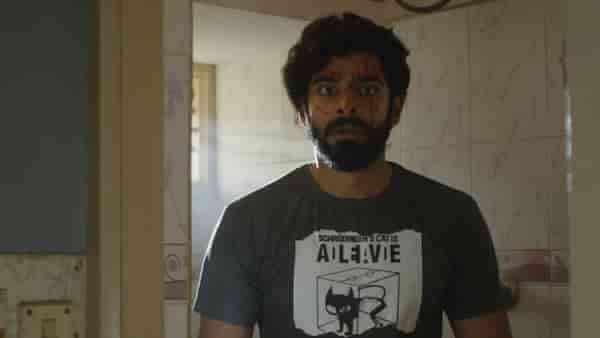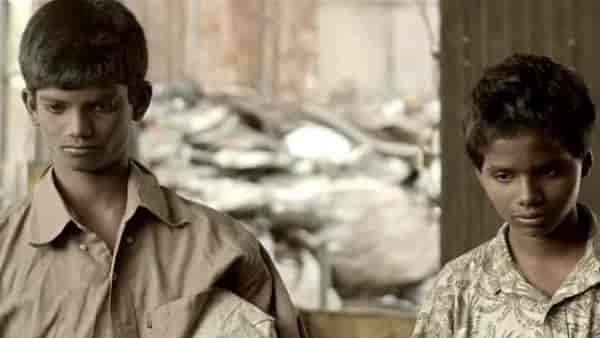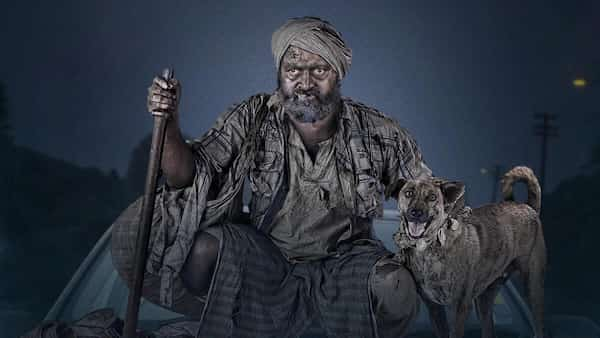Is Kannada Cinema Streaming's Stepchild?
Publicly and privately, Kannada filmmakers have been voicing concerns over the shrinking OTT space available to them, reports Subha J Rao.

Last Updated: 05.34 PM, Aug 18, 2024
“A KANNADA FILM for acquisition? Chhee, who is watching Kannada cinema?” followed by a shrug — this is the reaction the director of a recent Kannada film got from a decision maker at a prominent OTT platform. Another suggested he should have made the film in Malayalam, in which language it might have fared better. While Kannada filmmakers have been flagging — both in public and private — the shrinking OTT space available to them, this latest interaction is possibly the crudest that one of them has faced.
“I judged everything I did. I wondered why I’d made a film, why I had to wait to hear from a team that had zero empathy or understanding of my film and arrived at this conclusion without even watching the film in the first place. I questioned every choice of mine (sic),” says the director, who requested anonymity. Like him, many other young filmmakers I spoke with about this issue preferred to keep their names off the record, simply because if they were to make a second film, they would have to go back to the same OTT platforms to ensure their films live on online and find their audience.
Over the past couple of years, young Kannada filmmakers have been plagued by two overwhelming thoughts: will their film find a theatrical release window, and will their film find a home on a streaming service. The former, while formidable, can still be managed; the latter, however, is a steep mountain to climb. These filmmakers are simply unable to score meetings with the big OTT set-ups, and when they do manage that, they’re told there isn’t a budget for Kannada content.
Award-winning Kannada director Prithvi Konanur recently announced that from August 15, his films Railway Children and Hadinelentu will stream on the YouTube channel of Konanur Productions. A QR code will be attached to the cinema, and viewers can pay what they wish after watching the film.

When Rakshit Shetty’s Paramvah Studios announced that it was going to stream its Kannada series Ekam on a website developed for the purpose, many welcomed the decision, little realising it simply meant that even as big a name as Rakshit Shetty backing it was not enough for OTT channels to give the series a chance. Ekam is co-produced by Rakshit; Sandeep PS and Sumanth Bhat are its showrunners. The series features seven stories and stars names such as Prakash Raj and Raj B Shetty. The team waited for four years after making it (to find an appropriate streaming platform), before creating its own site to release the series, which has since received rave reviews.
While such an initiative is important to bypass existing roadblocks, it is also tangible proof of the roadblocks.
The show has since had a fair number of people pay and watch it. Sumanth is hopeful it will pick up with time, saying: “Paying money, however small an amount, is still a deterrent. People support you on social media, but they are yet to warm up to this idea of paying to watch what you want. But, hope floats.”
Recently, Hondisi Bareyiri director Ramenahalli Jagannath and Blink producer Ravichandra A J tweeted that they would, in the coming months, distribute and market independent filmmakers’ works under Janani Pictures. They say their goal is to bridge the gap between new-age filmmakers, marketing, and the theatre release setup. Ravichandra is in a good space to do this, because he single-handedly ensured that Blink, Shrinidhi Bengaluru’s intriguing time travel movie, had a theatre run of 50 days, and found a slot on Amazon Prime Video. Ravichandra used social media effectively and created a band of supporters for the film who then spread the message. He tweeted show timings and areas where it was being screened to ensure the hashtag #Blink got eyeballs.
These things were hitherto not considered the job of the producer, but events have come to such a pass in all industries that more than the making of a film, selling it to the audience takes precedence.

Even before this, steps were taken by the original outlier Pawan Kumar of Lucia and U-Turn fame to create a platform that would understand where Kannada content emerged from, a space that was not alien to local culture and nuances. For Lifeu Ishtene (2011), which he directed and starred in, along with Diganth, Samyukta Hornad, Sathish Ninasam and Sindhu Loknath, Pawan made his film available for audiences abroad at $2-5 through Home Talkies. “I wanted to make Kannada cinema accessible for an engineer who was sitting abroad, missing Bangalore. We began with grand plans to do away with the middlemen, because producers were left with little after paying everyone else. I hoped the platform would help everyone tap into each other’s audience. But we lacked the vision as an industry to tap into that. If we had built it then, we would not have to depend on multinationals now. See Hoichoi, and its devoted Bengali-content seeking audience. And so I’m happy with what Ekam is attempting,” says Pawan.
Pawan says that earlier, creators were arm-twisted into signing off on their intellectual property rights, as a result of which the rights of some Kannada films from the industry’s golden era are not even with production houses in Karnataka. “I want the Karnataka Film Chamber of Commerce to fight for those rights.” Pawan also says that one of the reasons the bigger OTT platforms don’t consider Kannada as a language important enough to invest in is because they don’t have to really play Kannada content to get subscribers from the state — they watch movies in every language. “We have to figure out a way to unite and create a plan that will still help us a decade later.”

So, how do OTT platforms choose films? What is the yardstick? Quality or business potential? A former creative head at one of the OTTs says the latter is more important. “It is necessary to not get emotional about the subject. I keep hearing about this sense of persecution people feel. But buyers are always unbiased and democratic — they buy if they like what they see. I have three points to make: Kannada films existed before streaming too. They just worked harder to make good films. If you say streaming has blurred geographical boundaries, it has also increased your competition. Your content has to have universal appeal, so practice it in your filmmaking. OTTs are a business run using private capital, they are not public money and are not duty-bound to support a creation,” he notes.
The executive says that there is a dire need to change one’s mentality while making a film. “Your idea should be to make a film that will primarily make its money selling tickets to a theatre audience, not to make a film that can be sent to OTT if it does not do well commercially. Why this expectation that an OTT has to pick it up?”

While this inordinate delay in getting signed on by OTTs causes financial loss, what irks 1888 film director Sourabh Shukla is the dent in confidence it results in. “Till we were making a movie, we were handling variables that we were aware of and that were under our control. It was enjoyable to don multiple hats, now we suddenly find ourselves dealing with a complex landscape you know nothing about. The festival circuit is certainly more democratic and open. This is a free fall, and we need some ecosystem that will ensure recovery of costs. Earlier, Netflix was quite the saviour of indie films. Not any more. At some stage, we are all going to figure out how to monetise via YouTube. It feels like we gave our all to our craft, but are being denied access to the medium itself.”
Sourabh is broken by how creativity has to tick pre-determined boxes. “It is not enough if you have a good heroine; your hero should have a market value or fit into a category. And this value diminishes or goes up with every film. So you cannot work on certain parameters because by the time your film is ready, the rules have changed. Some filmmakers wonder if the competition to their craft is Reels and Shorts,” he says.
Rakshit, who has been quite the risk-taker, betting on younger writers and directors, says that while it is disheartening that OTTs don’t invest in new Kannada projects, he does understand where they come from. “At the end of the day, no one wants to take a risk. I think this is the time for us to invest in good writers and develop our storytelling ability. We should use this as an opportunity to create content that people cannot say no to,” he says. Meanwhile, Sumanth Bhat says he feels naive and delusional to have believed that things will change. “We thought Ekam was perfect for OTT. As a creator you know that any show might have people who like it and who don’t. That is acceptable. But I was truly not prepared to be rejected without my series being watched. We worked on this during the pandemic, and after three years of wait, we had to create a platform to screen this. They point blank told us Kannada was not on their radar,” he rues.

Sumath’s feature Mithya, also backed by Rakshit, has won much love on the festival circuit, and that film is struggling to find an OTT platform too. “There are three issues here — creators getting dejected, producers not coming forward to back indie movies, and the audience we make a movie for being unable to see them,” he explains. Both Ekam and Mithiya had Rakshit’s backing, but Sumath says it is unfair to expect folks like Rakshit, Rishab and Raj Shetty to back films if they can’t crack OTT deals and recover the money invested. “Passion can only support you up to a point,” he says.
Incidentally, Rishab Shetty, who wrote, directed and starred in Kantara, one of Kannada cinema’s highest grossers in 2022, has still not found buyers for two films he’s backed — festival darlings Pedro by Natesh Hegde and Shivamma by Jaishankar Aryar. “It’s strange how these platforms overlooked not just my film, but many other decent Kannada films. We won many awards, screened over two dozen film festivals. The audience for my film is not limited to Karnataka. There is also no expiry date for this kind of a film,” says Natesh. Jaishankar did not face this rejection for the 2019 anthology Katha Sangama, again produced by Rishab, for which he had directed ‘Lachavva’. “We recovered our cost with that film. I’m still wondering what is the reason for this rejection of Kannada films by OTTs. Are there too many films to choose from, were earlier choices wrong?”
Director Hemanth M Rao, whose films Godhi Banna Sadharana Mykattu, Kavaludaari and Sapta Sagaradache Ello Side A and B have found an audience outside of Karnataka too, concedes that the situation looks scary, but there is a need to zoom out to see where the issue lies. “Some films are not working in theatres too, so it is unfair to expect them to pick up pace via OTT. That said, this current trend of ‘theatrical film’ and ‘OTT film’ has made things very difficult for young filmmakers. For some time now, filmmakers have also taken on marketing duties to get the audience to the theatre. I did it for all my films. I can make a great product, but what’s the point if it is not accessible?” he asks.
Among the South Indian languages, Kannada gets shortchanged by OTT platforms, with even big films waiting without OTT deals. “OTTs have turned a blind eye towards Kannada as a language. What hangs in the balance is also the cultural identity of our people, and how they will react. This is basically invalidation of an entire language, and this is also because we are not hyper regionalist by nature. We have had people come here 30 years ago and still not learn the local language! Until recently, they could get away with it — it was not forced or demanded of them. And that comes with a price when it comes to the survival of the arts. Language takes a backseat. But this will kill the industry because it is like pulling oxygen from it.”

Hemanth points to the opening page for Kannada-language content on one of the popular OTT platforms. “The top films are all dubbed. For a state of 6.41 crore people, it is almost like we don’t have a film industry here. The producers’ union, the film fraternity and the state government need to do something. So far, they have been useless in this aspect.”
The director is not wrong. Till date, the associations get involved primarily when it comes to a dispute — they function like arbitrators, especially with regard to money and dates. “They are so misaligned in terms of the problems of filmmakers. They don’t have an ear to the ground and they are outsourcing their responsibility. They should be fighting on our behalf with the state government. See the Telugu film industry — they were able to push for moving the acquisition window from 15 to 45 days and that the film titles need not carry the streaming partner logo. That offers an immediate benefit…people don’t think ‘Oh, we can watch this on OTT’,” Hemanth points out.
If the chamber intervenes, they can stop the situation where heroes are being ‘actively controlled’. “We should ask for better subsidies. We need the financial muscle to fight the good fight. Else, this frustration will eat at your energy, because you’re not just making a film, you’re also looking at the functional stuff,” says Hemanth.
The director also has an issue with the thought process that a film might have fared better commercially if it had been made in another language, like Malayalam. “That thinking is not in the best interest of filmmakers; it will not help people make better films. We should focus on making our cinema better so that no one ignores us, and make our stories compelling, flawless. You should give the least number of excuses for a film not working.” The director adds that this trial by fire will burnish Kannada filmmakers. “It makes you stronger. You will be more aware of your creation and understand that excuses can be damaging. Never never lose hope.”

Actor-director-producer Raj Shetty, whose latest (Roopantara, directed by Mithilesh Edavalath) managed two weeks in theatres, is clear that filmmakers cannot create content with no market value — either in terms of execution or sheer ideation. “Hostel Hudugaru Bekagiddare pushed boundaries, and ticked the boxes of engagement and entertainment. Why did Manjummel Boys do well in Karnataka? Because of how they worked on it, and the performances. The trick is to focus on doing it right, and then marketing it. It is a business, and emotions do not come into play here. This is a hard filtration/reset process, and only the ones who can tell stories will survive,” says Raj.
Pawan’s suggestion is to create quality content so that the consumer will be more than willing to pay for it. “Know who your target audience is. A film-loving auto driver will give any movie a chance, without waiting for reviews. Give your ready audience quality content. They will support you at the box office and elsewhere, and you will not have to depend on others for access.” The former OTT executive says that in a way this churn is good for the industry. “Yes, it is sad that some decent films too are getting crushed in this process, but that’s the price you pay. The industry is being shown a mirror,” he says. “In two years, once they revisit everything from stories, scripting and bankrolling to making and marketing, you’ll know which creators are here to stay for the long haul.”

 Premium
Premium